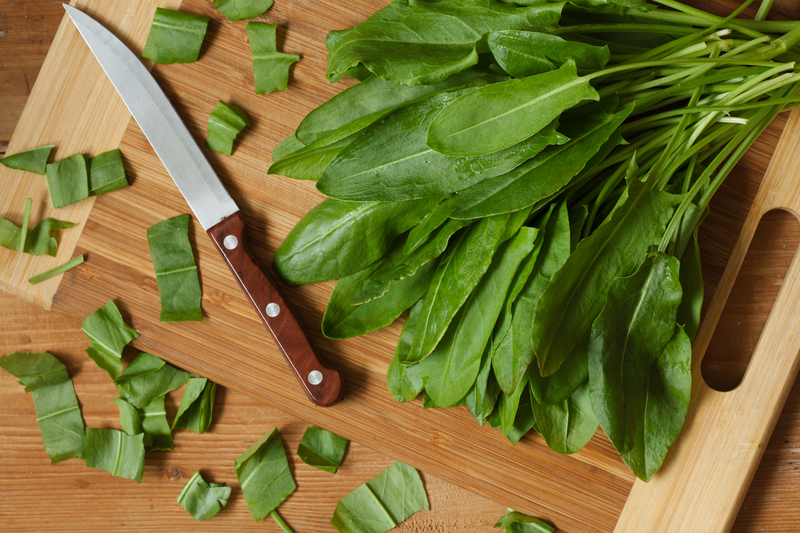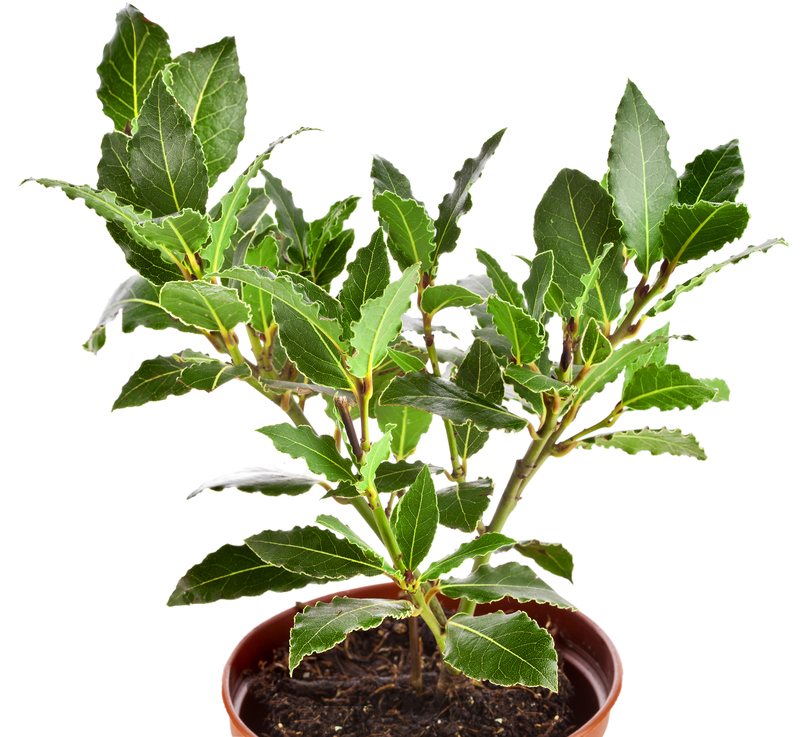The Ultimate Guide to Planting a Bountiful Herb Garden
Posted on 28/05/2025
Welcome to the Ultimate Guide to Planting a Bountiful Herb Garden. Whether you're a novice looking to start your first patch of fragrant basil and mint or an experienced gardener aiming to expand your culinary palette, this guide will cover all you need to know to grow herbs successfully. This article is designed to provide comprehensive, reader-friendly, and SEO-optimized strategies for creating an abundant and thriving herb garden, indoors or outdoors.
Why Grow Your Own Herb Garden?
Herbs offer more than just flavor for your meals; they provide health benefits, aromatic beauty, and versatility in your landscape or window sill. Planting an herb garden means:
- Fresh, organic herbs always at your fingertips
- Lower grocery bills
- Stunning scents that enhance your living space
- Pollinator support and ecological benefits
- Year-round culinary inspiration
Whether you cultivate a backyard herb patch or a windowsill container garden, you'll discover that herbs are among the easiest and most rewarding plants to nurture.

Choosing the Right Herbs for Your Bountiful Garden
For a truly bountiful herb garden, it's vital to select herbs best-suited to your climate, location, and needs. Here are some popular options:
Classic Culinary Herbs
- Basil – Essential for Italian and Mediterranean dishes.
- Mint – Refreshing for drinks and desserts; also repels some pests.
- Parsley – Adds bright flavor and garnish to a variety of meals.
- Rosemary – Hardy and aromatic, ideal for roasting and focaccia.
- Thyme – Versatile in soups, meats, and vegetable dishes.
- Cilantro (Coriander leaves) – Essential for Mexican, Indian, and Asian cuisines.
- Dill – Perfect for pickles, salads, and fish dishes.
Medicinal & Tea Herbs
- Chamomile – Famous for calming teas and gentle remedies.
- Lemon Balm – Uplifting citrus scent, attractive to bees and butterflies.
- Lavender – Known for its soothing aroma and skin-soothing properties.
Other Useful & Unique Herbs
- Sage – Traditional herb with culinary and medicinal uses.
- Tarragon – A mainstay in French cooking.
- Oregano – Packs a punch in tomato sauces and pizza.
Tip: When in doubt, start with a few versatile herbs you enjoy in your cooking. As your confidence grows, experiment with more unique or specialized varieties to broaden your herbal gardening experience.
Planning Your Perfect Herb Garden Layout
Designing your herb garden layout will depend on several factors: available space, sun exposure, and whether you prefer in-ground beds, raised planters, or containers.
In-Ground Beds
- Choose a patch with **at least 6 hours of sunlight** daily.
- Ensure well-draining soil to prevent waterlogged roots.
- Arrange herbs by height, with taller varieties like rosemary at the back and lower-growing herbs like thyme and oregano near the edges.
Raised Beds
- Excellent for improving soil quality, drainage, and accessibility.
- Prevent root competition by grouping herbs with similar needs together.
Container Gardens
- Ideal for patios, balconies, or window sills.
- Use pots with drainage holes; clay or ceramic pots are preferred for breathability.
- *Note: Herbs like mint and lemon balm are best grown in containers to keep them from spreading aggressively.*
Companion Planting
Certain herbs enhance each other's growth when planted together. For example, basil boosts the vigor of tomatoes, and chives can repel aphids from roses. Avoid combining herbs with disparate water or sunlight needs.
Preparing Soil and Planting Your Herb Garden
Soil Preparation
- Test Your Soil: A simple soil test will tell you about pH and nutrient balance. Ideally, most culinary herbs thrive in slightly alkaline to neutral soil (pH 6.0 to 7.5).
- Add Organic Matter: Mix in well-rotted compost or aged manure to enrich the earth and support robust root systems.
- Ensure Good Drainage: Herbs abhor soggy roots. Amending clay or compacted soils with sand and organic material will help.
Planting Process
- Choose between seeds or seedlings: Seeds offer more choices and are cost-effective, but take longer to mature. Seedlings provide a quicker start.
- Sow Seeds: Plant according to packet instructions; generally, a depth of 2-3 times the seed size is ideal.
- Transplant Seedlings: Carefully ease them from pots, disturbing the roots as little as possible. Space according to each herb's mature footprint.
- Water Thoroughly: Saturate the soil after planting, and keep it consistently moist (but not waterlogged) until the plants establish themselves.
Care and Maintenance for an Abundant Herb Garden
Regular care ensures your herb garden remains productive and healthy through every season.
Watering Wisely
- Frequency: Most herbs prefer to dry out slightly between waterings--overwatering can lead to root rot.
- Time: Water in the morning to minimize evaporation and reduce disease risk.
Fertilizing
- Light feeders: Herbs generally need less fertilizer than vegetables or flowers.
- Feed every 4-6 weeks during the growing season with a balanced, organic fertilizer or diluted fish emulsion.
Pruning and Pinching
- Pinch back regularly: Remove the growing tips to encourage bushy, compact plants and more leaves.
- Prevent flowering (bolting): For herbs like basil or cilantro, removing flower buds extends leaf production.
Pest and Disease Management
- Check often: Inspect undersides of leaves for pests like aphids or spider mites.
- Natural controls: Blast with water, introduce beneficial insects, or use organic sprays only as needed.
- Remove diseased leaves promptly to prevent spread.
Maximizing Your Herb Harvest
The secret to a bountiful herb garden is strategic harvesting. Follow these pointers to ensure you get the most from your plot:
- Harvest in the morning: Oils and flavors are most concentrated before midday heat.
- Take a little, often: Regular snipping encourages new growth while preventing your herbs from becoming leggy.
- Harvest before flowering: Leaves are at their most flavorful just before a plant blooms.
- Use sharp, clean scissors or pruners to avoid damaging the plants.
Storing Your Bountiful Herbs: Fresh cuttings can be stored in the refrigerator wrapped loosely in damp paper towels. For long-term storage, dry herbs in bundles in a cool, airy spot or chop and freeze in ice cube trays with a splash of water or oil.
Herb Garden Inspiration: Unique Ideas for Layout and Design
Herb Spirals and Raised Mounds
- Herb spirals optimize vertical space and create microclimates for different species. Plant drought-tolerant herbs like rosemary and thyme on the top, and moisture-loving types like parsley at the base.
Kitchen Herb Window Boxes
- Windowsill gardens put fresh herbs within arm's reach for convenient meal prep. Choose compact varieties like chives, basil, and parsley for best results.
Companion Herb Borders
- Edge your vegetable beds or flower borders with fragrant and functional herbs to deter pests and attract pollinators.
Common Challenges in Creating a Plentiful Herb Garden (and Solutions!)
Poor Growth or Yellowing Leaves
- Likely causes: Overwatering, poor drainage, or nutrient deficiency.
- Solution: Allow soil to dry out; amend with compost; consider using a balanced, organic fertilizer.
Herbs Bolting Too Early
- Likely causes: Warm temperatures or insufficient pinching/pruning.
- Solution: Keep pinching off flower buds; plant heat-sensitive herbs in partial shade during hot months.
Pests and Fungal Issues
- Likely causes: Overcrowding, wet foliage, or lack of air circulation.
- Solution: Space plants properly; water the soil, not the foliage; remove problem leaves promptly.
Seasonal Care: Keeping Your Herb Garden Abundant All Year
Spring and Summer
- Peak growth period: Focus on routine harvesting, watering, and mulching to conserve moisture.
- Succession planting: For a continuous harvest, sow small crops of fast-growing herbs like basil and cilantro every few weeks.
Autumn
- Time to harvest and preserve: Cut back herbs, dry or freeze excess, and prepare beds for winter.
- Perennial herbs like rosemary or sage may need mulching to protect roots in colder climates.
Winter
- Bring pots indoors: Many herbs, such as chives, oregano, and thyme, thrive on a sunny windowsill.
- Grow under lights: Use LED grow lights to supplement natural sunlight in darker months.

Bountiful Herb Garden FAQ
1. How do I ensure my herb garden stays productive?
Regular harvesting, proper watering, yearly soil amendments, and strategic pruning are key to a lush and flourishing garden. Rotate herbs seasonally to prevent soil depletion.
2. Can I grow a bountiful herb garden indoors?
Absolutely! With sufficient sunlight or grow lights, proper containers, and careful watering, you can enjoy abundant fresh herbs all year, even indoors.
3. What are the best herbs for beginners?
Basil, mint, chives, parsley, oregano, and thyme are hardy, forgiving, and useful in many cuisines.
Conclusion: Enjoy the Rewards of Your Flourishing Herb Garden
Creating a lush, bountiful herb garden is within the reach of every gardener, no matter how much or how little space you have. Take time to plan, select the right herbs, provide gentle care, and you'll reap the rewards of abundant fresh herbs for cooking, healing, and simply enjoying the scents and sights of nature. Happy gardening!

